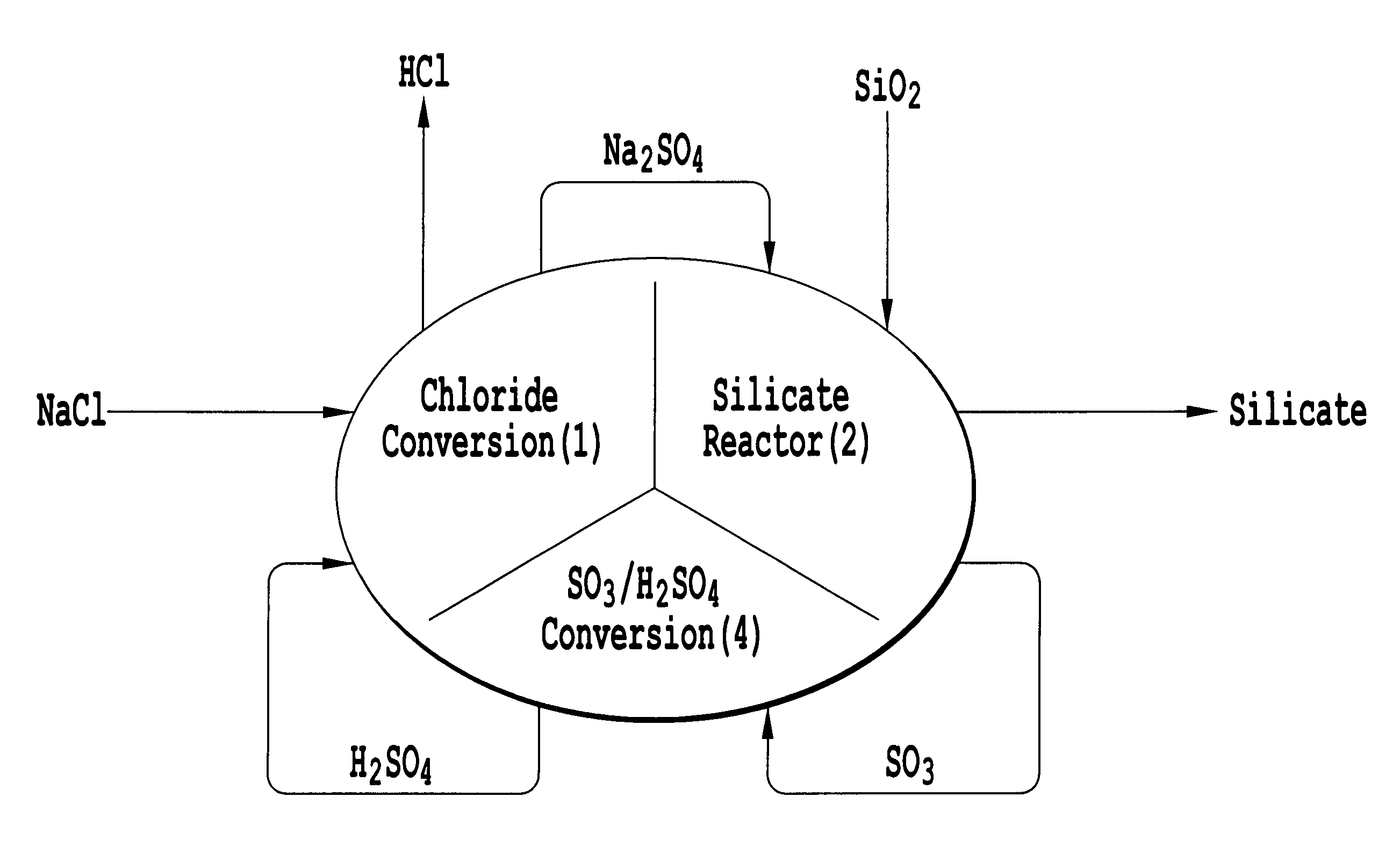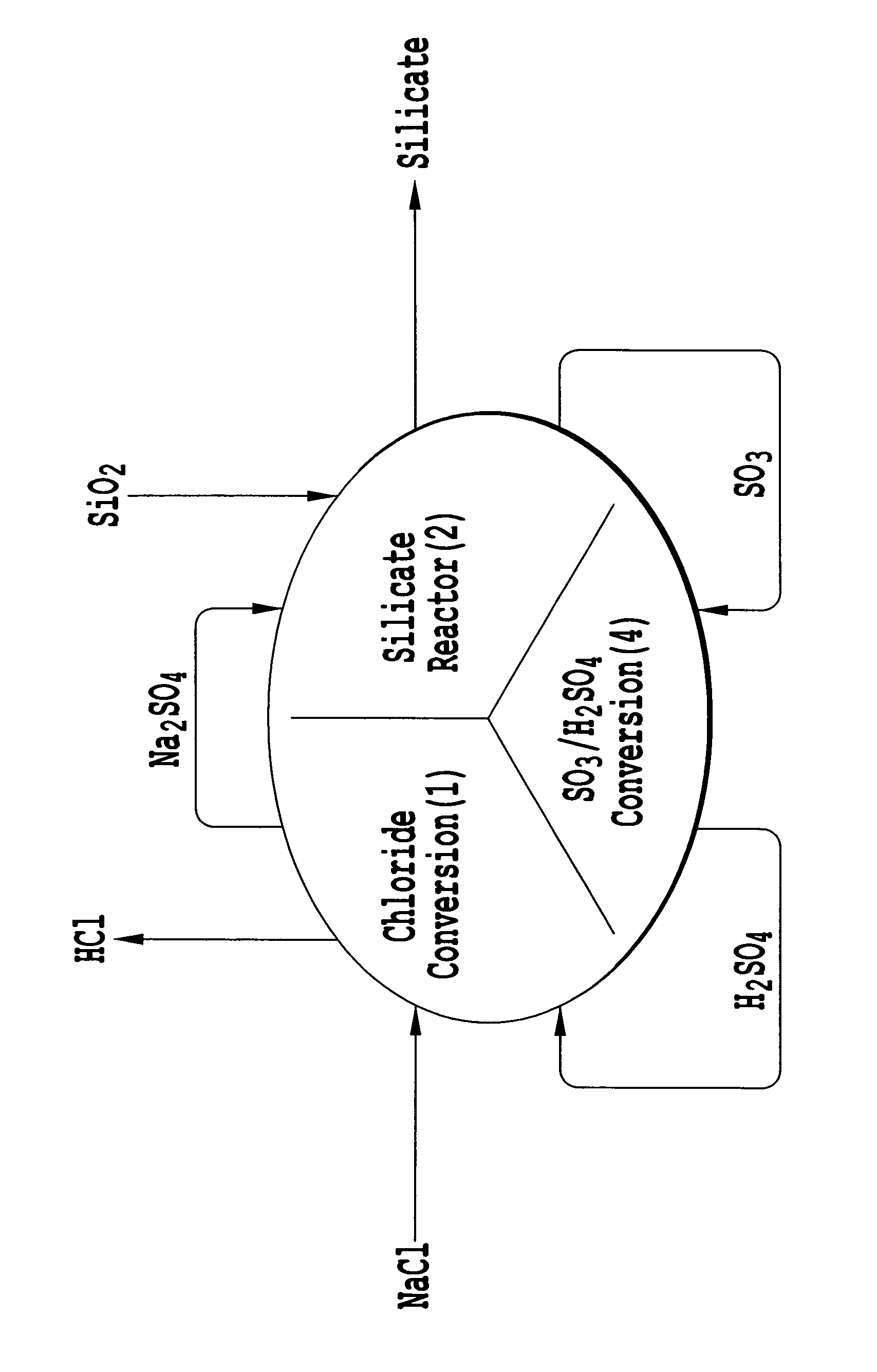Process for preparing batch materials for the manufacture of glass
- Summary
- Abstract
- Description
- Claims
- Application Information
AI Technical Summary
Benefits of technology
Problems solved by technology
Method used
Image
Examples
example 1
[0059]This example uses for step (3) fuel 100% in sulfur form (coming especially from the desulfurization of oil refinery products).
[0060]Its net calorific value (NCV) is 2584 kWh / tonne of sulfur.
[0061]Reaction (2) requires 2042 kWh, i.e. 790 kg of sulfur (24688 mol of S).
[0062]Combustion of this sulfur produces y (=24688) moles of SO2.
[0063]Apart from the 5489 mol self-feeding the feedback loop with H2SO4, a further 24688 mol of H2SO4 are therefore obtained, i.e. 2420 kg that can be utilized outside the feedback loop.
example 2
[0064]This example uses for step (3) a fuel in the form of a No. 2 heavy fuel oil containing 4% sulfur.
[0065]Its NCV is about 10930 kWh / t. Therefore 187 kg of this fuel oil is needed to produce one tonne of silicate.
[0066]7.5 kg of sulfur coming from this fuel oil, i.e. 234 mol, will therefore be burnt, releasing y (=234) moles of SO2.
[0067]234 mol, i.e. 23 kg of H2SO4 are therefore obtained that can be utilized outside the feedback loop.
[0068]It may therefore be seen that the excess sulfuric acid that can be obtained over that needed for reaction (1) varies greatly depending on the choice of fuel. All the intermediate solutions, with the combination of fuel oil and sulfur, or else the use of vulcanized tires, are possible, thereby allowing the best adjustment of the combustion (3) depending on the type of fuel most available and / or on the amount of sulfuric acid that it is desired to produce.
PUM
| Property | Measurement | Unit |
|---|---|---|
| Heat | aaaaa | aaaaa |
Abstract
Description
Claims
Application Information
 Login to View More
Login to View More - R&D
- Intellectual Property
- Life Sciences
- Materials
- Tech Scout
- Unparalleled Data Quality
- Higher Quality Content
- 60% Fewer Hallucinations
Browse by: Latest US Patents, China's latest patents, Technical Efficacy Thesaurus, Application Domain, Technology Topic, Popular Technical Reports.
© 2025 PatSnap. All rights reserved.Legal|Privacy policy|Modern Slavery Act Transparency Statement|Sitemap|About US| Contact US: help@patsnap.com


